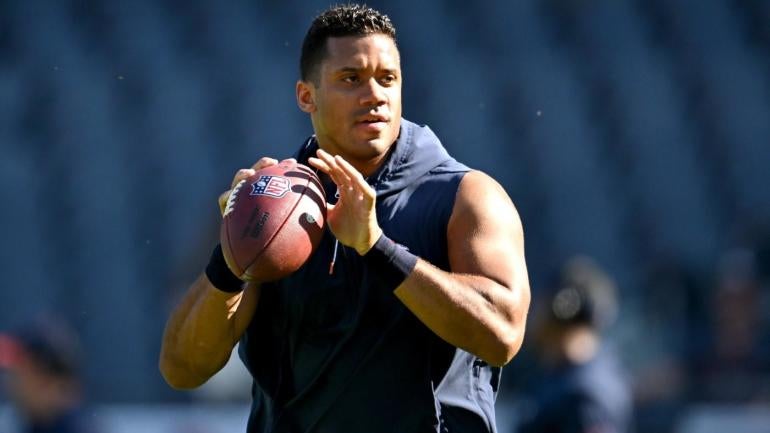
"Let Russ Cook" is a thing of the past, but the Steelers offense will be improved in 2024 after a number of changes, including the addition of Russell Wilson.
The QB room was completely overhauled after Pittsburgh also traded for Justin Fields and shipped Kenny Pickett to the Eagles. WR Diontae Johnson was traded to the Panthers, while the Steelers took OG Troy Fautanu, C Zach Frazier and WR Roman Wilson with their first three picks in the 2024 NFL Draft.
The Matt Canada era is long gone, and former Falcons head coach Arthur Smith takes over as the offensive coordinator. Got all that?
Wilson and Smith haven't exactly made a lot of positive headlines in recent years, but they are certainly an upgrade for an offense that ranked 27th in EPA per play last year. Pittsburgh's 17.9 points per game were the fewest by a 10-win team since the 2005 Bears. Ouch.
Steelers fans should be delighted to hear that the new offense will be a blend of the smashmouth football they know and love, with the big-play ability they've desperately needed.
The staples of Smith's offenses during his tenure with the Titans (offensive coordinator from 2019-20) and the Falcons (2021-23) were running the ball with play-action shots downfield. The Falcons and Titans both ranked top five in run-call rate and play-action with Smith, similar to the numbers from Wilson's time with the Seahawks.
NFL ranks with Russell Wilson and Arthur Smith
| Run-call percentage rank | Play-action percentage rank | |
|---|---|---|
Falcons with Arthur Smith | 5th | 3rd |
Titans with Arthur Smith | 2nd | 3rd |
Seahawks with Russell Wilson | 1st | 6th |
Pittsburgh was still living in the stone age with Canada, sporting the lowest play-action rate (10.4%) in the entire NFL during his three seasons. It also had the ninth-shortest average pass (7.4 yards), a far cry from the rate the Falcons posted with Smith (8.2 yards), which was the sixth-longest in the NFL.
Wilson may not be as fleet of foot as he used to be, but he still has one of the prettiest deep balls in the NFL, one that presents a massive upgrade from the Steelers options last year. As the chart below showcases, Wilson was better than league average last year in terms of frequency and accuracy throwing the deep ball. Pickett, not pictured below because he did not qualify, had one of the highest off-target rates on deep passes last year.
Looking at how QBs did throwing a catchable ball over 25 air yards pic.twitter.com/bTJEEJ9BL6
— Billy M (@BillyM_91) May 5, 2024
This could mean instant chemistry with George Pickens, who will be the focal point of the Steelers' passing game with Johnson out of the picture. Pickens managed to lead the NFL in yards per catch last year despite an up-and-down season. He is a premier deep threat, catching 12 passes thrown 20-plus air yards and outside the numbers in 2023, a number only surpassed by Tyreek Hill. Wilson could bring out the best in Pickens, as he leads the NFL in completions on those passes in the last five seasons.
Wilson will also have options over the middle of the field in Wilson, who led the FBS last year in percentage of catches from the slot going for first downs (87%).
Pittsburgh still needs improved offensive line play to fuel the run-centric attack and protect Wilson. The Steelers allowed the eighth-highest natural pressure rate (37%) last season (natural pressure = pressure without blitzing) -- poor play that would get exposed even more with Wilson, who holds on to the ball longer than most and takes too many sacks. Enter Pittsburgh's top two draft picks, Fautanu and Frazier, who could immediately slide into starting roles next to James Daniels, Isaac Seumalo and Broderick Jones. I don't expect Wilson to return to Pro Bowl form (he was outside the top 20 in EPA per play last year), but this system and some of its supporting cast should suit him better than in Denver.
And while Pittsburgh wasn't able to land a blockbuster trade for the likes of Brandon Aiyuk or Deebo Samuel, there's reason to believe this offense has a higher ceiling than in years past, and can perhaps help deliver Pittsburgh's first playoff win since the 2016 season.

















